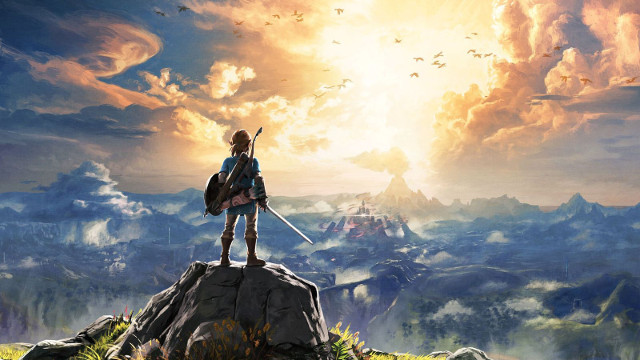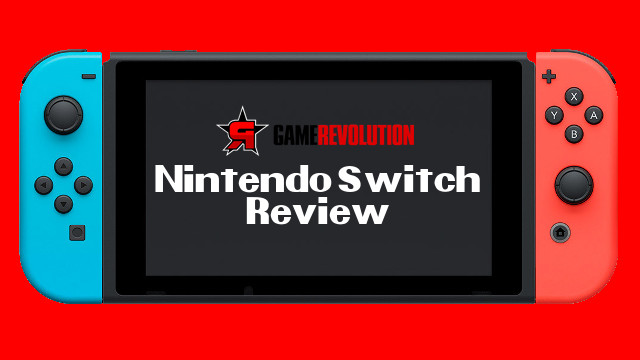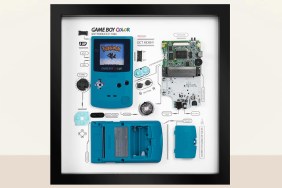After years of speculation, the Nintendo Switch has arrived. Aiming to bridge the gap between home console and handheld, this radical gaming device is unlike anything the industry has ever seen before.
We received our review unit on February 20th, providing us more than a week to experiment with the device before reaching a verdict. Though, as with other gaming devices, this verdict is far from a conclusion. The real story will be told in the months and years to come, where we’ll find out how practical the Switch’s innovations are, and how it can substantiate itself among a ferocious sea of competition.
Now that we’ve used the device for more than a week, we’re ready to share our final thoughts. You may have already seen our impressions after 20 hours of using the Nintendo Switch, which you can read here. In this review we are briefly going to share our thoughts on every major element of the device. This way, you can quickly read about what you’re most interested in without having to sift through endless paragraphs. Let’s get to it.
The Setup: Installation Made Simple
Although the Switch is effectively two gaming devices in one, setup is a breeze. The packaging makes initial interactions user-friendly, with each element of the device housed neatly in the box alongside simple setup instructions (with pictures).
After a few moments of admiring the hardware, your journey will begin with you turning on the Screen. You are then asked to input a few basic settings using capacitive-driven taps and gestures (multi-touch is supported) before docking the Switch for your first time. Instructions are made clear and concise. You don’t even have to log-in with an official Nintendo ID before arriving at the main menu. Within a couple minutes you can be playing Zelda, and that’s a success in and of itself when compared to the heftiness of the PS4 and Xbox One.
The Screen: Better Than You’re Expecting
While the resolution of the Screen is only 720p, games and menus appear colorful across its 6.2 LCD inches of real estate. Image quality is better than its 237 ppi would suggest, displaying menu items and font in a sharp manner. This is way beyond anything the 3DS was ever capable of, taking Nintendo handheld gaming to a whole new level.
The build quality of the Screen is fantastic, far surpassing other included console elements. It feels substantial in the hands, and with a delightful appearance. Even if you aren’t expecting to play the Switch in handheld mode, you might just find yourself doing so to give yourself an excuse to use the Screen.

Although image quality is great, the real winner here is touch input. Unlike the Wii U GamePad and many other devices in the same price territory, the Screen replies to you immediately, using haptic feedback for emphasis. Typing messages and inputting passwords is far easier with this touchscreen than a controller, giving the Switch a leg up on the competition in some applications.
The only disappointment here is battery life. While nearly half of the internal space has been spent on a lithium-ion battery, screen-on time rarely lasts beyond three hours when playing a game. This is par for the course when it comes to current battery technology, but nonetheless results in a lot of charging. You might just find your Screen battery life diminished within the next couple years, which could pose a problem long-term.
The Dock: It Does The Job
The Dock is a bit different than you might expect coming from a traditional console. It doesn’t house any processing hardware, and instead serves as a conduit between the Screen and a TV. It’s best compared to the PlayStation VR’s breakout box if you’re familiar with that. As a result of this, it’s extremely lightweight and flimsy. Frankly, it looks a bit silly next to an Xbox One S or PS4, but that’s okay because the Dock serves its purpose well.
Mounting the screen is made simple by a guidance mechanism. The 1080p image translated to the television is crystal clear, making no compromises when the Switch is in docked mode. You’ll probably never notice that you are technically playing a home console using hardware that fits inside of a 6.2 inch tablet.
Since Docked mode is the primary means of charging the Screen and Joy-Con Controllers, it is an important element of the Switch ownership experience even if you play exclusively in handheld mode. On that front, charging is a bit unorthodox. There is only one AC adapter included with the Switch, and it’s used for both the Dock and Screen. Given the short battery life of the Screen, it’s advisable that you consider picking up a second charging cable if you plan to split time between docked and handheld mode, or you’ll spend a lot of time pulling the AC adapter out from behind the Dock.
The Joy-Con Controllers: Snap and Go
The Joy-Con controllers don’t make a great first impression. They’re small and lightweight to a point where they come across as inexpensive, particularly when compared to the competition. But don’t let that fool you. Under the hollow plastic shell is a lot of technology. The Joy-Con controllers house a gyroscope and accelerometer, in addition to all the necessities including multiple buttons and an internal battery.
The real surprise here is HD Rumble, which allows incredibly precise communication from the controllers. This is something that is well demonstrated in 1,2 Switch, but will probably see infrequent support from software similar to the Xbox One’s impulse triggers. Even then, when it’s used it’s impressive.

Ergonomics are good, but not great. When using both Joy-Con controllers with the Grip, the experience is comparable to a dedicated console controller, although the buttons and joysticks are much smaller. When attached to the Screen in handheld mode, they provide a means of input that is far more comfortable than the 3DS. They can even be used individually, in which case they are best compared to using a Wii-Mote horizontally.
More than anything, the Joy-Con perform well as part of the Switch’s functionality. They can quickly transform to suit your needs depending on your specific use case. It helps that the process of attaching and detaching them is neat, and perhaps a bit addictive thanks to the sound they make when they click into place.
The Features: As Barren as a Desert
There is very little currently available in the Switch operating system. You can alter a few settings and play games, but that’s about it. Without a Virtual Console available at launch, a Netflix app, or any of the social features present on either the Wii U or 3DS, there’s nothing to do but play games. That can be a good or bad thing depending on your interests.
The only exception to this is the screen capture feature. Executed using a dedicated button on the left Joy-Con controller, its use is surprisingly quick. Screenshots are taken instantly, and without the nuanced overhead of the PS4’s share functionality. In trade, there are very few ways to share.
On the topic of social features, there is no online available until launch. We will revisit this at a later date.
The Games: Quality Over Quantity
The Legend of Zelda: Breath of the Wild is good… really good. It’s likely that many will argue that it’s the best console launch title of all time. For some buyers this single game will be enough to validate their console purchase.
Problems arise the second you take your eyes off Zelda. There aren’t even a dozen launch games, and none of them really stand out as offering something that’ll last more than a couple days. The library is particularly disappointing when you see how many of the small number of games are ports.

The good news is Mario Kart 8 Deluxe looks like a substantial re-release, and it’s coming out in less than two months. That will be followed up with Splatoon 2, and eventually Super Mario Odyssey. These are all games that are certain to be well-received, which is something doesn’t usually happen during the first year of a console’s lifespan. It might not be able to compete with other consoles in terms of third-party support, but Nintendo’s first party is going to be electrifying now that its home console and handheld ecosystems have been merged
With all this in mind, you could argue that the Switch is Zelda dependent, or at least in the short term.
Conclusion
The Switch represents another ambitious piece of Nintendo hardware that is unlike anything else on the market. The good news is that it has succeeded in its effort of providing a means of enjoying games of all kinds, from indie to AAA, no matter where you are. The bad news is that Nintendo still struggles in several key areas, most notably on features and build quality. The Switch currently offers nothing outside of dedicated gaming experiences, and in non-luxurious fashion.
Even then I’ve found myself mesmerized by the Switch. I never thought I would enjoy a hybrid gaming machine as much as I have. The way I see it, it’s a perfect supplemental console. I might use my PS4 to play third-party releases, socialize, and watch Netflix, but the moment I want to relax while playing an exclusive title or am about to head somewhere where I’ll be waiting a while, the Switch is coming out without hesitation.
Unlike the Wii U, what the Switch delivers isn’t just a gimmick, it’s a complete transformation of how and where you play games. For that, it deserves your attention, even if that means being an interested spectator until more games become available.










